A Beginners Guide to Stand Up Paddleboarding
What is paddleboarding?
Stand up paddleboarding (SUP) is a water sport where a person stands on a large, stable board—similar to a surfboard—and uses a long paddle to move through the water. It’s an increasingly popular activity on the UK’s lakes, rivers, and even the sea—and best of all, people of all ages and abilities can join in!Who can paddleboard?
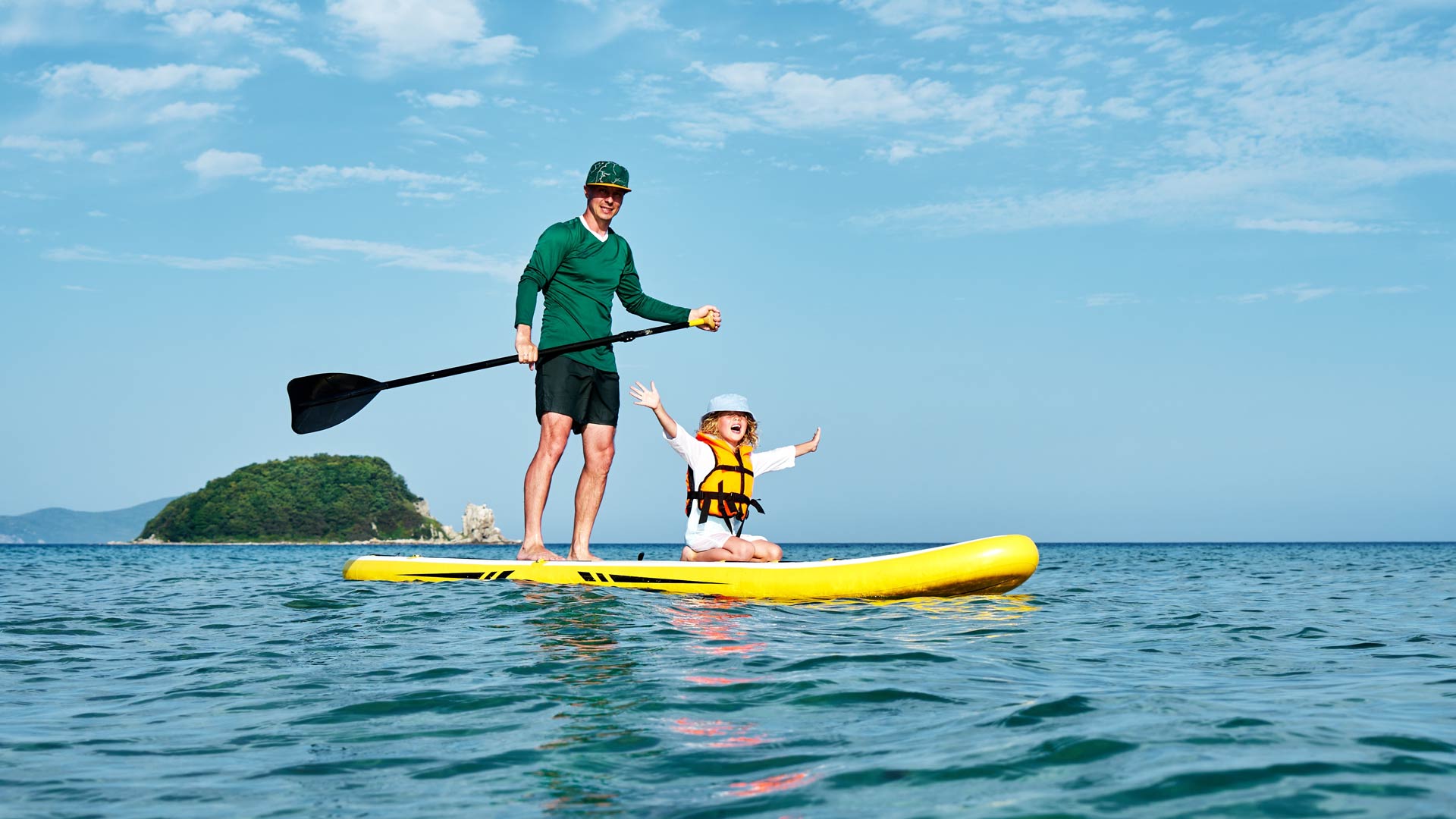
Paddleboarding has no set rules. It’s a low-impact activity that can be adapted for everyone to enjoy. Thanks to its growing popularity, you’ll usually be able to book an instructor to show you the ropes and boost your confidence—making it even more accessible. Here are a few variations of paddleboarding to show you how adaptable it can be as a water sport.
Sit down paddleboarding
Sitting on a paddleboard gives more stability than standing and opens the sport up to anyone unable to stand for long periods. You can sit with your legs out in front of you, kneel, or sit cross-legged. Sit down paddleboarding is great for relaxing and building confidence on the water.
Lie down paddleboarding
Also called prone paddleboarding, lying face-down and using your arms to paddle is a great way to build upper-body strength. This position opens the sport up to even more people.
Paddleboard Yoga
Once you’re on the board, you can spend your time on the water however you like. Try some gentle stretching or yoga poses for a relaxing twist on traditional stand up paddleboarding.
Is paddleboarding hard?
The great thing about paddleboarding is that you can make it as relaxing or challenging as you like. Standing is harder than kneeling, so if you’re wary, sit with your legs crossed for extra stability.
Equipment needed for paddleboarding
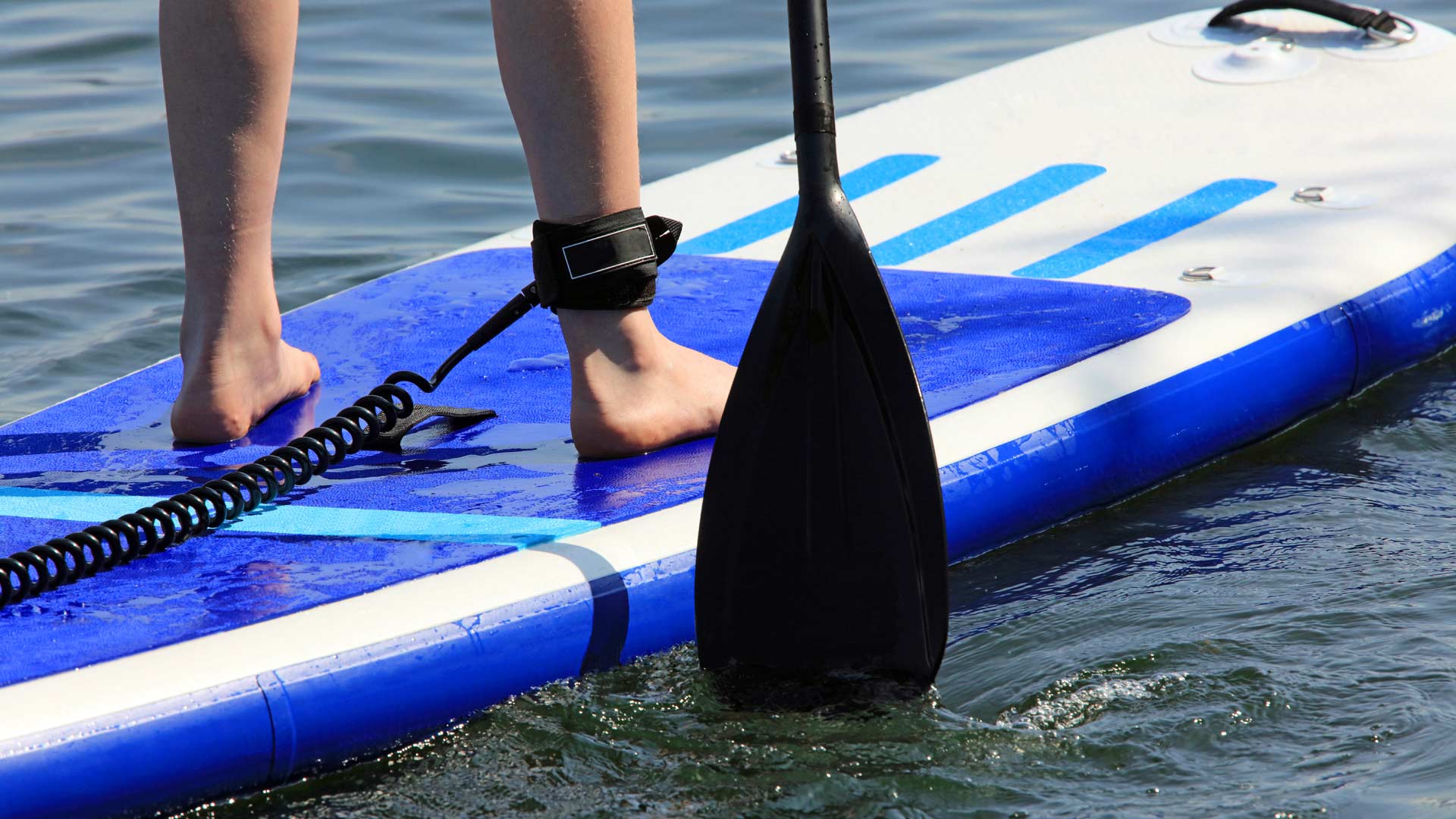
- SUP and paddle
- Personal flotation device (PFD)
- Towel
- Drinking water
- Waterproof bag
- Suncream
- Dry clothes
Do I need a licence to paddleboard?
If you're paddleboarding on managed canals and rivers in the UK, you'll need a licence. If you're under the supervision of an instructor, they can tell you whether you need your own.
What to wear paddleboarding?
In the UK the most popular attire when paddleboarding is a wetsuit to prevent getting too cold. Wetsuits are readily available to hire if you’re not ready to invest.
In the summer months, a rash vest and swimwear are fine – but it’s all about personal preference. If you feel the cold, stick to a wetsuit.
How to choose an SUP
Paddleboards come in different sizes and shapes and can be categorised by the type of materials they’re made of, and the type of activity they’re best for.
Choosing the Right Size SUP
Height and weight are the biggest factors in determining what size paddleboard you need. Most SUPs are between 10 – 11 feet long and between 32 – 34 inches wide. If you’re of average height, the standard sizes are fine but always check manufacturers guides.
Consider board thickness too—thinner boards are lighter and cheaper, while thicker boards are faster and better for heavier riders.
Inflatable paddleboards
Best for: beginners, budgets and storage
- Easy to transport
- Stable and soft - great for beginners
- Durable and dog-friendly
Due to their ability to be deflated, rolled up and stored, inflatable paddleboards are great for travel. The soft surface of an inflatable paddleboard makes it easier than a traditional board to stand up on, which is a bonus for beginners.
Don’t let “inflatable” make you picture a delicate board as a good inflatable SUP can easily compete with fiberglass. Inflatable paddleboards float along the top of the water, so they are a slower option, but they’re just as ridged as a hard board.
Hard paddleboards
Best for: advanced paddleboarding
- Traditional feel
- Great for speed and agility
- An investment in comparison to inflatable boards
Hard paddleboards are made of foam, wrapped in layers of fibreglass, coated with epoxy resin. They’re better for wave riding and long-term durability but cost more and are less portable. If you’re looking for speed, durability, and agility, you need a hard board.
Choosing the correct paddleboard shape
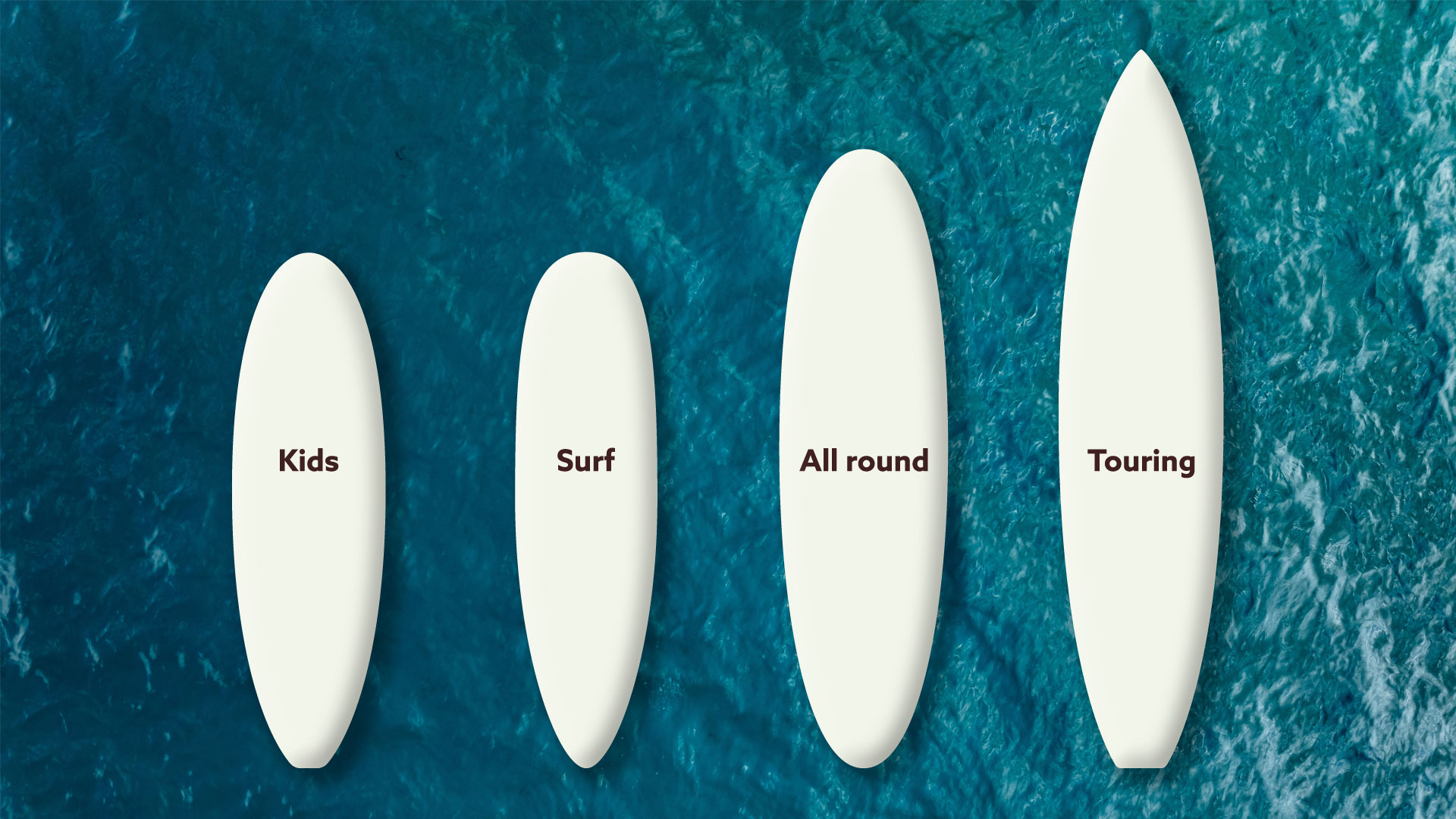
Here’s a breakdown of common paddleboard shapes:
- Kids - shorter than an adult board, lightweight and easy to handle.
- Surf – for anyone specifically wanting to catch waves while paddleboarding.
- All round – stable, classic shape.
- Touring – a longer shape, perfect for anyone wanting to paddleboard with a dog, kid or kit on the front.
Stand up paddleboarding technique
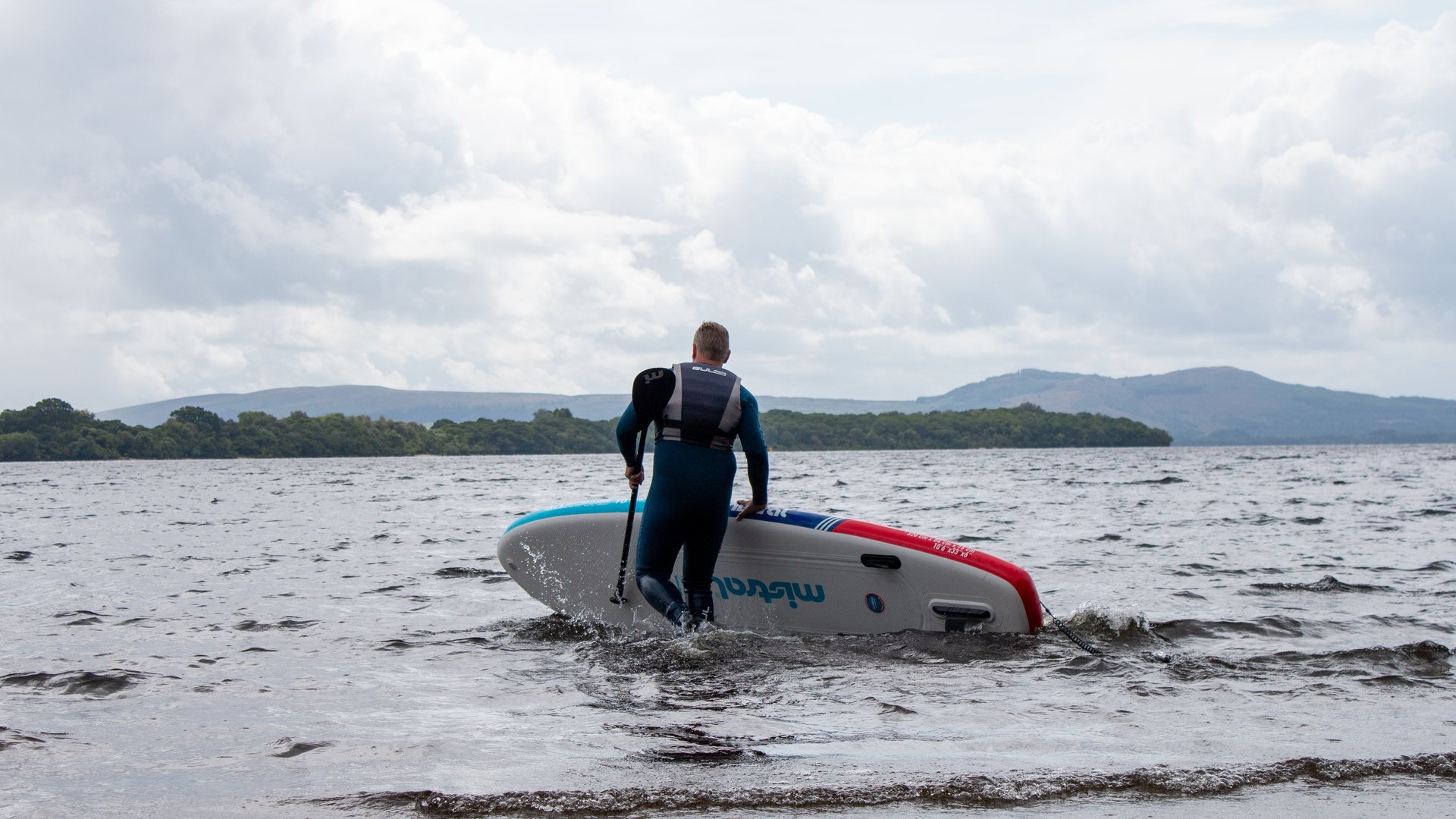
Learning to SUP can be broken up into simple steps, and once you’ve mastered the basics, you can experiment with more challenging techniques. Practise on dry land before getting in the water, and most of all, have fun and don’t put too much pressure on learning quickly!
The best technique for stand-up paddleboarding (SUP) involves a combination of proper body positioning, paddle stroke technique, and balance. Here are some key elements to consider:
1. Stance and balance:
- Stand with your feet shoulder-width apart, parallel to the stringer (centerline) of the board.
- Keep your knees slightly bent to maintain stability and absorb shock.
- Distribute your weight evenly on both feet and engage your core for better balance.
- Look forward and maintain a relaxed posture.
2. Paddle grip:
- Hold the paddle with a relaxed grip, placing one hand on the top handle (T-grip) and the other hand on the shaft.
- Your top hand should be positioned slightly above shoulder level, while the lower hand should be lower, around the height of your hip.
3. Paddle stroke technique:
- Start with the paddle in front of you, fully submerged in the water, with the blade angled away from you.
- Engage your core and pull the paddle backwards, using your core, back muscles, and arms in a smooth and controlled motion.
- As you pull the paddle backwards, rotate your torso and hips, allowing for a more powerful stroke.
- Exit the water cleanly by raising the paddle near your feet once it reaches your hip level.
4. Turning:
- To turn, you can use a forward sweep stroke or a reverse sweep stroke.
- For a forward sweep stroke, reach the paddle forward and away from the board, then sweep it out to the side, making a wide arc away from the board.
- For a reverse sweep stroke, start with the paddle near the tail of the board and sweep it in a wide arc toward the nose of the board.
Tips for beginners
Don’t be intimidated by trying a new water sport – here are 5 tips to set you up for success.
1. Choose your paddleboarding location carefully
Calm, sheltered waters are best for beginners. A large lake on a mild day with minimal wind is the ideal place and conditions to give paddleboarding a go for the first time. You won’t have to battle waves and should stay warm for longer.
2. Rent your paddleboarding kit
Don’t feel pressured to invest right away. If you’re in a popular paddleboarding location, you’ll likely find places to rent a board, wetsuit, and paddle.
3. Hire an instructor
Similarly, if you’re not confident on the water and feel you’d benefit from guidance in real-time, you can hire someone to show you the ropes. This is a great way to get feedback on technique and learn about how to stay safe on the water.
4. Prepare to make a splash
As much as we’d like to hope we won’t fall off and make a splash, it happens. Take a towel and dry clothes for afterwards, and remember that it's all part of the process.
5. Have fun
Paddleboarding for leisure isn’t a competitive sport; enjoy your time on the water and make the most of trying something new.
How to stay safe while paddleboarding
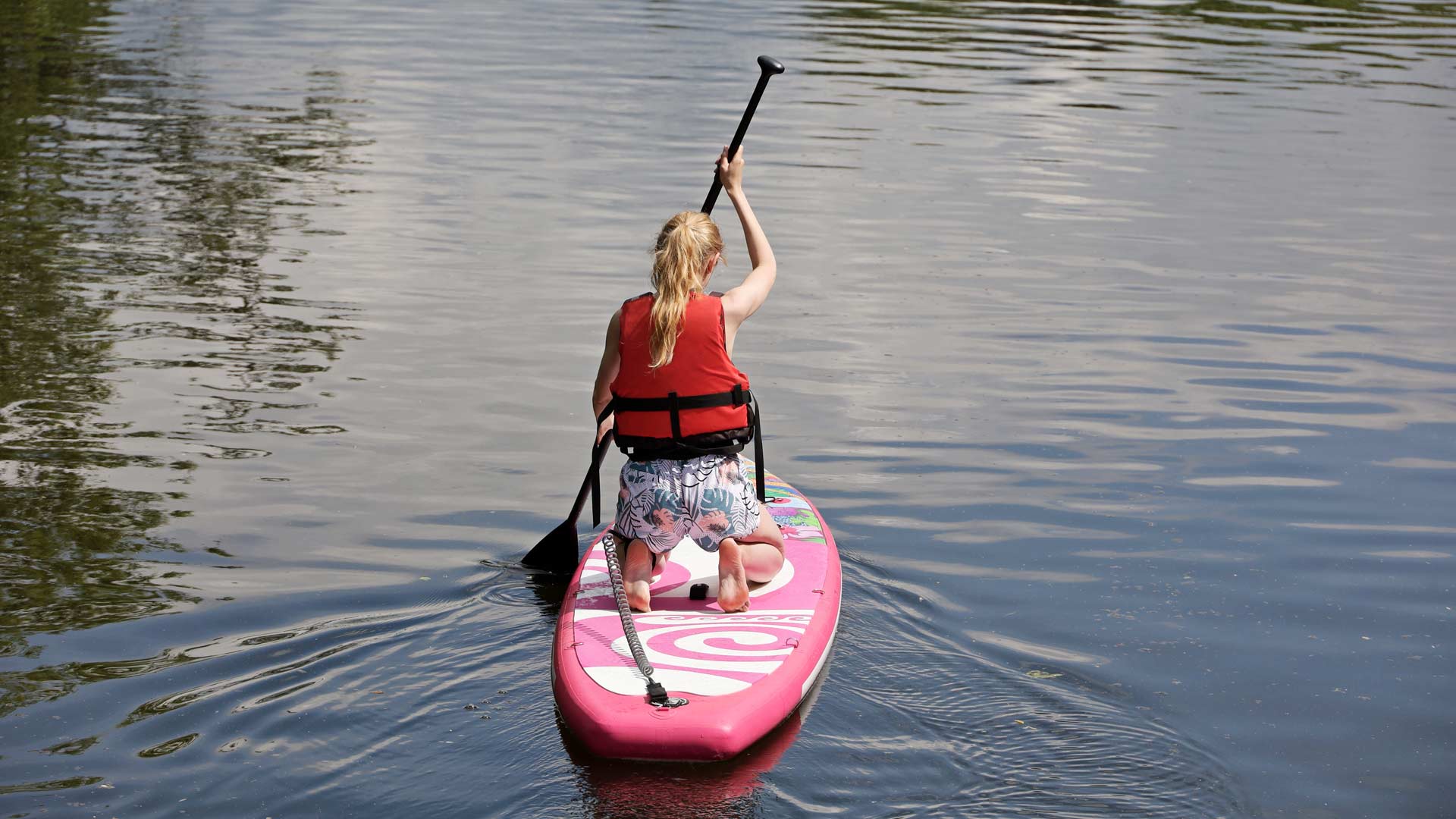
Any water sport needs to be undertaken with care. Here are a few key safety tips to follow:
1. Wear a Personal Flotation Device (PFD), which will provide buoyancy and can save your life in an emergency.
2. Attach a leash to your ankle or calf and secure it to the board. This prevents the board from drifting away from you if you fall into the water, making it easier to retrieve and ensuring you don't become separated from your board.
3. Before heading out, check the weather forecast and be aware of any potential changes or storms. Avoid paddleboarding in severe weather conditions such as high winds, lightning storms, or heavy rain.
4. Familiarise yourself with the water conditions, including currents, tides, and waves. Choose appropriate locations for your skill level and always be aware of changing conditions. If you're new to paddleboarding, start in calm, flatwater areas.
5. Take the time to learn basic water safety skills, including swimming, self-rescue techniques, and how to call for help in an emergency. Being comfortable in the water and knowing what to do can make a significant difference in your safety.
6. Bring water with you to stay hydrated, especially during hot weather or prolonged paddling sessions. Apply sunscreen to protect your skin from harmful UV rays, and consider wearing protective clothing.
7. Stay alert and be aware of your surroundings at all times. Look out for other boats, vessels, or watercraft and give them the right of way.
Keeping children safe when paddleboarding
Paddleboarding with kids requires careful planning. Here’s a list of musts when paddleboarding with children.
- Supervision – always keep an eye on children in or near water. It takes seconds for things to go wrong.
- Safety equipment – PFDs or life jackets should be worn by even confident swimmers. Make sure leashes are worn to keep kids connected to their board, which will act as a float if needed.
- Mitigate risk – choose a calm body of water with limited boat traffic, check the weather and use an easy access point.
- Pack well – take sun protection, warm clothes and a basic first aid kit.
Explore paddleboarding sites in the UK
Discover top paddleboarding spots across the UK—or jump straight in and search for a campsite for your next waterside adventure.

